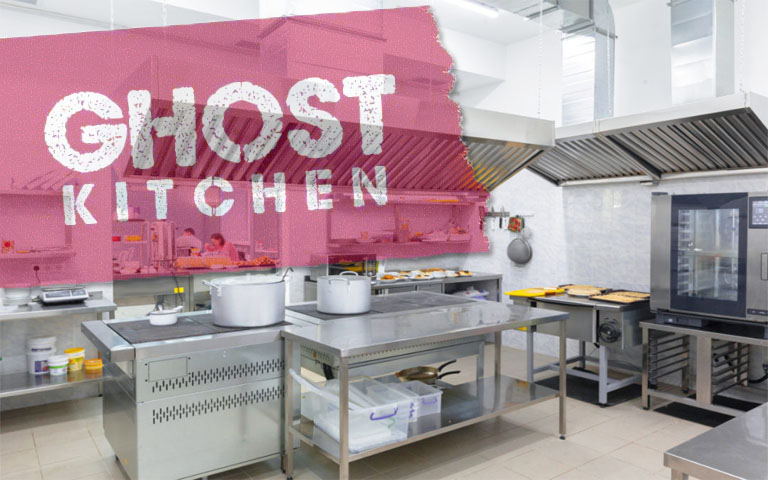You may have seen or heard of restaurants that are apparently closed for dining but are still operating and sending deliveries. That is exactly what is a ghost kitchen or a cloud kitchen. You may have ordered a meal from a ghost kitchen without even knowing. So, here’s everything you need to know about what a ghost kitchen is, how it started, and it’s future in the hospitality industry.
There are mainly three different approaches to running a ghost kitchen which may range from adding a delivery-only brand to a brick and mortar restaurant to running a ghost kitchen housing multiple brands. Take a closer look at the three different types of ghost kitchen business models:
Running a ghost restaurant
One of the business models of a ghost restaurant includes running the restaurant exclusively in the cloud without having a physical storefront. Essentially, it is a delivery-only kitchen where consumers cannot dine-in.
Running a shared ghost kitchen
Another model that a business can operate is a complete ghost kitchen business by renting out kitchen spaces to multiple restaurant brands. The shared ghost kitchen business acts like a coworking space or an incubator for restaurants. They have perfect Kitchen fruit wall arts which is attracting restaurants. Therefore, running a shared ghost kitchen business is similar to acting as a landlord rather than running the restaurant business yourself.
Adding a delivery-only brand to an existing restaurant
Existing restaurants are also leveraging the ghost kitchen trend by adding a delivery-only brand to their restaurant. With this business model. Restaurants can also offer take-out from a physical location. Moreover, they have a choice to offer the same items on the existing menu or build a different menu for deliveries.
The future of ghost kitchens
According to Global Magazine, Ghost kitchens face a few challenges such as relying on third-party delivery apps, working with on-demand staff, strong competition in the digital marketplace, local regulations and licenses, etc. However, the future of ghost kitchens seems bright, especially after the COVID-19 time
Restaurant owners don’t have to invest a huge amount to open a restaurant and the risk is reduced with the concept of cloud kitchens.
It is a great business model if you are just starting out as a chef or an entrepreneur, or if you own a small brick and mortar restaurant and want to use it as a virtual kitchen, or for large non-restaurant brands, etc. I hope you like reading this article.











